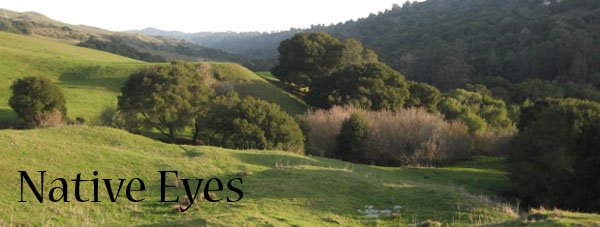
We started this week out with a nice dip in the pond. It was raining and the rest of the landscape was already drenched and slick with water. So we figured we'd finish the job and go jump in the lake. Actually, we were after cattails.



When we arrived at camp we found our firepit flooded. Everything was awash and the local gopher holes had turned to artesian wells gushing with water. Our little camp was transformed from meadow to a crisscrossing of clear creeks and treacherous mud. You can see the puddle in the firepit below.
To protect our Tuesday night tradition of cooking over the fire, we determined this week that we'd have to construct a shelter. We started by collecting cattails from the local spring-fed ponds and carting them back to camp, then arranged them radially around the firepit to see how much we'd gathered. Our cattail supply circled the firepit entirely.

We came to consensus quite quickly on our design and construction strategy, then broke into teams. One team gathered poles while the other tied the cattails together at the thick ends (base of the stalk) to form skirt-like arched mats.
When the mats were done and the poles retrieved, it was time to dig postholes. About eight inches down the postholes turned into wells. Every chop of the posthole digger sent sprays of mud. We set the posts in, wedged in place with sticks and stones, and called it a night.
...
The next morning we had an inspiring bird sit and spectacular debrief. The sit was marked by pockets and huge blankets of silence over the land, and at the end the Cooper's Hawk winged high straight over the meadow.
While we debriefed the bird language patterns around the hawk, a Redtail began circling and posturing territorially up the valley to the northeast. Jays yelled the "hawk on the wing" call,shack shack shack shack shack! The jays began standing sentinel looking south, flickers were on the move, and robins plowed in a wave out of the lower valley going northwest. Silence settled on. Soon, flying low up the valley from the south, swooping from behind the yurt to try his talons on the quail (no kill), came the Cooper's himself. As we stared disbelievingly at the hawk's wake, another large bird flew fast and high over our heads, coming from the Redtail's territory up the valley northeast of us. It sped over the still silent meadow with strong, regular beats of it's pointed wings and someone shouted "Peregrine!"
After some moments of exuberant exultation and staring wide-eyed into the sky, we had had enough of these distractions. So we moved the rest of the debrief into the yurt. (Really, though, the cold, clouds and wind came back so we went in to sit by the fire.)

In the afternoon, we got to work further on the shelter. We assembled the frame by lashing poles together with whatever string or twine we could find, and began setting up the skirt-mats on the frame. We tied them in place too.



We found that the rough thatch, though lying well and smoothly on the outside, hung through shaggily inside and dangled in faces and eyes. We wove switches and long twigs into the inner wall to hold back the danglies.
Finally, with dusk settled on, our frame was done. We'd finished the first layer of our south, east, and north walls. Our firepit had drained, and we used excess twigs and tules to make a raised mat to keep our butts off the still gooshy mud. The space was, if not complete, then still ready and useful.
With the extra poles chopped into firewood and laid as a raft to protect our little fire from the damp, we lit a hand-drill coal. Cattail down from the cut cattails, kept inside shirts against warm bodies all day, came out dry and ready to nurture the coal. We nursed the fire to life in a quickly-gathered tinder bundle, lit a teepee of dead twigs harvested from trees that had stood in the sun all day, and had our first ever cattail-sheltered Native Eyes fire. The fire, though made with some rotten and green wood, sent just a wisp of smoke straight up into the darkening sky.

The nearly full moon rose in the East over our shelter. The chill wind that snaked up the valley from the southwest did not make our fire waver. The fire still sent its column of smoke straight up and out the half-moon hole in our partial roof. There is something deeply, instinctively satisfying about sitting by a central fire and telling stories of natural mystery, with firelight dancing in our eyes, our shadows playing across round cattail walls.




